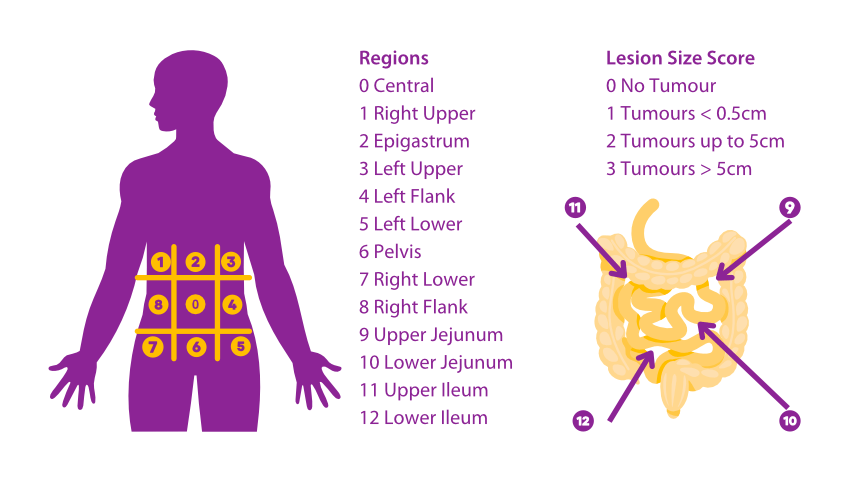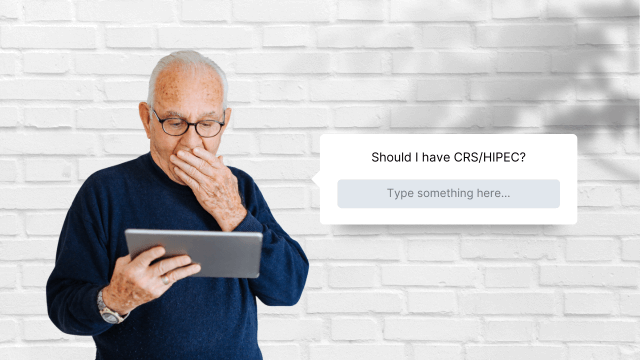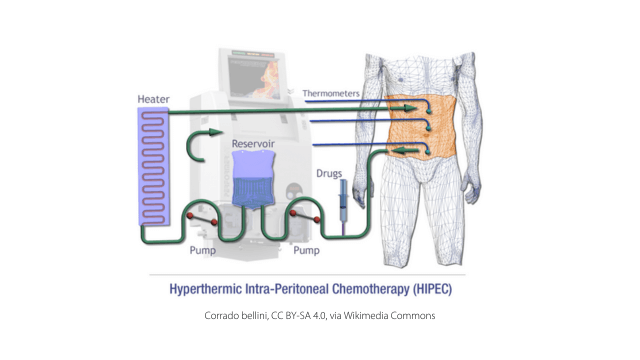Doctors use the PCI score to help guide treatment options for Pseudomyxoma Peritonei (PMP) and other cancers that affect the lining of the abdomen.


Doctors use the PCI score to help guide treatment options for Pseudomyxoma Peritonei (PMP) and other cancers that affect the lining of the abdomen.

The decision to undergo cytoreductive surgery with HIPEC for pseudomyxoma peritonei (PMP) is a personal one and should be made in consultation with your medical team.

HIPEC stands for “Hyperthermic Intraperitoneal Chemotherapy” and follows cytoreductive surgery (CRS).
My journey started in October 2013 (I was 53 years old), when I had an ultrasound to determine if I had gallstones or an issue with my gallbladder. The results showed a small cyst and mild fluid in my lower right abdomen area. It was decided that we would monitor the cyst and fluid and have an MRI in one year. We thought it was nothing more than an ovarian cyst. I never thought it would lead to a diagnosis of Mucinous Appendiceal Adenocarcinoma.
I do an exercise class and I was having trouble keeping up and my belly was growing with no changes to my diet. In my head, I was thinking that was just signs of perimenopause and that was my new figure. Some women just have a muffin top at 44, right? I was also going to the restroom for frequent urination. I was under the care of a urologist for that at the time of my diagnosis with pseudomyxoma peritonei or PMP.
The recommendations from the people in the support group are because they care. The decisions we make are literally life and death.
I didn’t have any related symptoms before my diagnosis. I went to the urologist for some UTI treatment. The doctor (my hero) ordered a CT scan. That was the beginning of my journey. PMP is so rare and the right treatment is so important. You have to do research just to find the right medical team that is experienced in treating PMP. My wife and family, of course, were there for me.
Before I was diagnosed, I experienced increased abdominal size and piercing pain which was diagnosed initially with an inflamed appendix. It took about four months and another doctor for me to get the correct diagnosis at the end of January 2014.
Initially, I had flu-like symptoms with pain in all the joints in my body followed by bad abdominal pain that did not go away.
I had an ultrasound which showed a large tumour which was confirmed by MRI. I had surgery at my local hospital to remove a tumour the size of a football and my diagnosis of pseudomyxoma peritonei (PMP) was confirmed.
I cried as I was driving home from my doctor’s appointment. Then I picked myself up when I got home and googled “low grade mucinous appendiceal neoplasm” because I needed to know everything about this new enemy. That’s when I found the term pseudomyxoma peritonei.
After my diagnosis with metastatic, well-differentiated mucinous adenocarcinoma of the appendix, my doctor said I have a 72% chance of being alive in 10 years; those are great odds for a cancer patient.